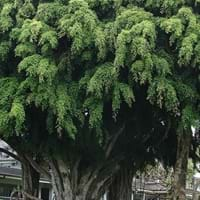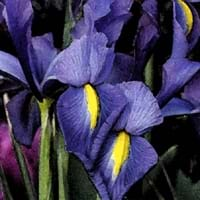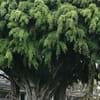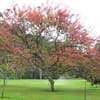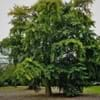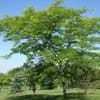Life Span
Perennial
Perennial
Type
Tree
Herbaceous Perennial
Origin
Southern Asia, Southeastern Asia, India, Melanesia, Australia
Hybrid origin
Types
Not available
Not Available
Habitat
Temperate Regions, tropical environments, Tropical regions
meadows, Riverbanks, Rocky Mountains
USDA Hardiness Zone
10-15
5-9
Sunset Zone
H1, H2, 13, 23, 24
2b, 3a, 3b, 4, 5, 6, 7, 8, 9, 10, 11, 12, 13, 14, 15, 16, 17, 18, 19, 20, 21, 22, 23, 24
Habit
Thicket/Colonizing
Clump-Forming
Flower Color
Not Available
White, Yellow, Blue, Purple, Orange, Pink, Rose, Coral, Peach, Burgundy, Lavender, Plum, Orange Red, Dark Salmon, Bronze, Chocolate, Black
Flower Color Modifier
Bicolor
Bicolor
Fruit Color
Yellow, Red, Green, Pink, Orange Red, Black
Not Available
Leaf Color in Spring
Dark Green
Green, Light Green, Gray Green
Leaf Color in Summer
Dark Green
Yellow green
Leaf Color in Fall
Dark Green
Not Available
Leaf Color in Winter
Dark Green
Light Green
Leaf Shape
Elliptic
Sword-like
Plant Season
Spring, Summer, Fall, Winter
Spring
Sunlight
Full Sun, Partial Sun, Partial shade
Full Sun, Partial Sun
Growth Rate
Very Fast
Medium
Type of Soil
Loam, Sand
Clay, Loam, Sand
The pH of Soil
Acidic, Neutral, Alkaline
Acidic, Neutral, Alkaline
Soil Drainage
Well drained
Well drained
Bloom Time
Spring
Early Spring, Spring, Late Spring
Tolerances
Drought, Full Sun, Shade areas, Variety of soil types
Drought
Where to Plant?
Ground
Ground
How to Plant?
Cuttings, Layering
Root Plants
Plant Maintenance
Low
Medium
Watering Requirements
Water carefully
Average Water Needs
In Summer
Lots of watering
Lots of watering
In Spring
Moderate
Moderate
In Winter
Average Water
Average Water
Soil pH
Acidic, Neutral, Alkaline
Acidic, Neutral, Alkaline
Soil Type
Loam, Sand
Clay, Loam, Sand
Soil Drainage Capacity
Well drained
Well drained
Sun Exposure
Full Sun, Partial Sun, Partial shade
Full Sun, Partial Sun
Pruning
Remove damaged leaves, Remove dead branches, Remove dead leaves
Remove damaged leaves, Remove dead branches, Remove dead leaves
Fertilizers
10-10-10, All-Purpose Liquid Fertilizer, Any balanced general purpose fertilizer, slow-release fertilizers
All-Purpose Liquid Fertilizer
Pests and Diseases
Red blotch, Soft scales
Bacteria, fungus, Viruses
Plant Tolerance
Drought, Full Sun, Shade areas, Variety of soil types
Drought
Flowers
Insignificant
Yes
Flower Petal Number
Not Available
Single
Foliage Texture
Medium
Fine
Foliage Sheen
Glossy
Matte
Attracts
Birds
Butterflies, Hummingbirds
Allergy
Rhinoconjunctivitis, wheezing
Not Available
Aesthetic Uses
Bonsai, Cottage Garden
Beautification, Showy Purposes
Beauty Benefits
Reduce Bruises
Not Available
Environmental Uses
Air purification
Air purification
Medicinal Uses
Antibacterial, Aphrodisiac, Dysentry
Not Available
Part of Plant Used
Bark, Fruits, Leaves, Root
Flowers, Root
Other Uses
Container
Basketary, Used for fragrance
Used As Indoor Plant
Yes
No
Used As Outdoor Plant
Yes
Yes
Garden Design
Container, Feature Plant, Hedges, Houseplant, Screening / Wind Break, Shade Trees, Topiary / Bonsai / Espalier, Tropical
Cutflower, Foundation, Mixed Border, Rock Garden, Wall
Botanical Name
FICUS benjamina
IRIS 'Apollo'
Common Name
Weeping Fig, Benjamin's fig, Ficus tree
Carmen Iris, Dutch Iris
In Hindi
रो अंजीर
Dutch Iris
In German
Birkenfeige
Dutch Iris
In French
figuier pleureur
Dutch Iris
In Spanish
higo llorón
Dutch Iris
In Greek
κλάμα σύκο
Dutch Iris
In Portuguese
chorando fig
Dutch Iris
In Polish
płacz rys
Dutch Iris
In Latin
Plorans ficum
Dutch Iris
Phylum
Magnoliophyta
Magnoliophyta
Class
Magnoliopsida
Magnoliopsida
Order
Urticales
Asparagales
Family
Moraceae
Iridaceae
Clade
Angiosperms, Eudicots, Rosids
Angiosperms, Monocots
Subfamily
Not Available
Iridoideae
Importance of Weeping Fig and Dutch Iris
Want to have the most appropriate plant for your garden? You might want to know the importance of Weeping Fig and Dutch Iris. Basically, these two plants vary in many aspects. Compare Weeping Fig and Dutch Iris as they differ in many characteristics such as their life, care, benefits, facts, etc. Every gardener must at least have the slightest clue about the plants he wants to plant in his garden. Compare their benefits, which differ in many ways like facts and uses. The medicinal use of Weeping Fig is Antibacterial, Aphrodisiac and Dysentry whereas of Dutch Iris is Not Available. Weeping Fig has beauty benefits as follows: Reduce Bruises while Dutch Iris has beauty benefits as follows: Reduce Bruises.
Compare Facts of Weeping Fig vs Dutch Iris
How to choose the best garden plant for your garden depending upon its facts? Here garden plant comparison will help you to solve this query. Compare the facts of Weeping Fig vs Dutch Iris and know which one to choose. As garden plants have benefits and other uses, allergy is also a major drawback of plants for some people. Allergic reactions of Weeping Fig are Rhinoconjunctivitis and wheezing whereas of Dutch Iris have Not Available respectively. Having a fruit bearing plant in your garden can be a plus point of your garden. Weeping Fig has no showy fruits and Dutch Iris has no showy fruits. Also Weeping Fig is not flowering and Dutch Iris is flowering. You can compare Weeping Fig and Dutch Iris facts and facts of other plants too.
